2021 Live Review 4 | AP Calculus AB | Integrals & the Fundamental Theorem of Calculus
TLDRThe video script is a detailed transcript of an online calculus lesson, where the instructors, Mark Corelli and Verge, engage with the audience on a live platform. They tackle various calculus topics, including integrals, anti-derivatives, and the fundamental theorem of calculus. The session begins with technical difficulties due to internet issues in Mississippi but quickly transitions into an interactive lecture. The instructors provide a slideshow, address internet problems, and delve into unit 6 of calculus, which focuses on indefinite and definite integrals, their properties, and integration techniques. They also discuss the importance of understanding the difference between indefinite and definite integrals and the application of the fundamental theorem of calculus. Throughout the lesson, they work through multiple-choice problems and provide solutions, emphasizing the need for showing work to avoid picking wrong answers. The instructors also mention additional resources, such as annotated solutions and extra materials to be posted for further practice. They conclude with a reminder of the importance of practice and the upcoming topics for the following lessons.
Takeaways
- 📈 Understanding integrals as areas under curves is a fundamental concept for calculus problems.
- 🔍 Definite integrals can be broken down into smaller parts that are easier to calculate, especially when dealing with piecewise functions.
- 📚 The properties of integrals allow for flexibility in how they are calculated, such as splitting them at points of discontinuity without affecting the result.
- 🧮 Techniques like U-substitution and completing the square are essential for finding antiderivatives and solving integrals.
- 📐 Recognizing symmetry in functions can simplify the calculation of integrals, as areas can cancel each other out.
- 🤔 The process of elimination and showing work is crucial for multiple-choice questions, as it helps avoid incorrect answers.
- 📉 For piecewise functions, the integral can be calculated by understanding the behavior of the function within each piece.
- 📂 Using a table of values to approximate integrals with methods like the Left Riemann Sum is a common technique in calculus.
- 🔢 The Fundamental Theorem of Calculus connects differentiation and integration, allowing for the calculation of definite integrals by finding antiderivatives.
- ⚖️ The concept of limits and continuity is important in calculus, especially when dealing with points of discontinuity in functions.
- 📝 It's important to show all steps in calculations, as this demonstrates understanding and can lead to full credit on exams.
Q & A
What is the main topic of discussion in the provided transcript?
-The main topic of discussion is calculus, specifically integrals, anti-derivative rules, definite integrals, and the application of the fundamental theorem of calculus.
Why does the speaker mention having internet issues?
-The speaker mentions having internet issues because there were technical difficulties during the live session, which caused disruptions and glitches in the video feed.
What is the significance of the 'fundamental theorem of calculus' in the context of this discussion?
-The fundamental theorem of calculus is significant as it connects differentiation and integration, allowing the calculation of definite integrals by finding anti-derivatives, which is a key concept being taught in the session.
How does the speaker approach the problem of a piecewise function's definite integral from one to five?
-The speaker approaches the problem by understanding that the definite integral represents the area under the curve, and by using the properties of integrals to break the problem into parts that can be solved more easily.
What is the purpose of the warm-up problem involving the piecewise function?
-The purpose of the warm-up problem is to illustrate the concept of definite integrals as areas and to prepare the learners for more complex problems involving integrals that will be discussed in the session.
Why does the speaker emphasize the importance of showing work when solving integral problems?
-The speaker emphasizes showing work to ensure that students understand the process of solving integral problems and to avoid picking the wrong answer without justification. It also helps in AP exams where showing the work process is necessary to earn points.
What is the role of the 'indefinite integral' in calculus?
-The indefinite integral represents a family of functions that are anti-derivatives of a given function. It is used to find the original function when given its derivative and is denoted by '∫' with a '+ C' to represent the constant of integration.
How does the speaker handle the issue of a discontinuity in a function when calculating a definite integral?
-The speaker explains that removable discontinuities or jump discontinuities can be ignored when calculating definite integrals because the integral represents the sum of infinitely thin rectangles under the curve, which are not affected by dimensionless points.
What is the strategy the speaker uses to solve the problem involving the table of values for a left Riemann sum?
-The speaker uses the left Riemann sum approximation method by selecting the left-hand height for each subinterval and multiplying it by the width of the interval, then summing these products to approximate the definite integral.
Why does the speaker discuss the importance of understanding the properties of definite integrals?
-The speaker discusses the properties of definite integrals to highlight that integrals can be broken into parts, and that the integral of a continuous function can be calculated even if the function has removable discontinuities, which is crucial for solving complex integral problems.
What is the key takeaway from the discussion for students preparing for the AP calculus exam?
-The key takeaway is the importance of understanding and applying the fundamental theorem of calculus, recognizing the properties of integrals, and the necessity of showing all work when solving problems, especially on the AP exam where the process is as important as the final answer.
Outlines
😀 Introduction and Internet Issues
Mark Corelli starts the video by addressing internet connectivity problems in Mississippi and welcomes everyone to the live session. He mentions that Verge will join shortly and proceeds to begin the slideshow. Mark talks about the day's agenda, which includes working with integrals, anti-derivative rules, definite integrals, and the fundamental theorem of calculus. He also discusses the importance of pausing the video to access forms and resources, and hints at providing annotated solutions and extra material in the future.
📈 Warm-Up Problem and Area Calculation
The warm-up problem involves finding the definite integral of a piecewise function from one to five. Mark emphasizes understanding the concept of a definite integral as the area under the curve. He uses a low-tech graph to illustrate the process of finding the area, which involves adding the areas of two triangles and a rectangle. Mark also addresses feedback from viewers, reassuring them that calculus is challenging and commending their efforts.
🧮 Indefinite Integrals and U-Substitution
Mark moves on to discuss indefinite integrals, using the example of the integral of 2e^(x/2)dx. He explains the process of using a u-substitution to solve the integral, transforming the problem into a more manageable form and then anti-differentiating to find the family of functions that represent the solution. Mark also differentiates between indefinite and definite integrals and emphasizes the importance of showing work to avoid choosing the wrong answer.
🔍 Definite Integrals and Piecewise Functions
The discussion continues with definite integrals, specifically focusing on a piecewise function defined by g(x). Mark breaks down the integral from negative 1 to 3 into two parts, using the properties of definite integrals to separate the calculation into intervals. He calculates the area under the curve for each part, considering the geometric interpretation of the function and its continuity. Mark also touches on the concept of removable discontinuities in the context of definite integrals.
🏟️ Left Riemann Sum and Stadium Exit Strategy
Mark tackles a problem involving a table of values representing the rate at which people leave a stadium after a game. He uses a left Riemann sum to approximate the number of people leaving the stadium during the first 15 minutes. Mark emphasizes the importance of understanding different approximation methods and the need to show work, especially in the context of the AP exam.
📐 Fundamental Theorem and Area Calculations
The video features a problem that requires the application of the fundamental theorem of calculus to find g(7), given g(0) = 2π and a graph of g'(x). Mark uses the accumulation model to set up the integral from 0 to 7 and finds the area under the curve, which includes a semi-circle and a line segment. He highlights the importance of practice and understanding the fundamental theorem for solving such problems.
🔢 Completing the Square and Trigonometric Integrals
Mark discusses an indefinite integral that appears to require a u-substitution but instead leads to completing the square. He demonstrates how to rearrange the integral to find a perfect square trinomial, which factors and leads to an inverse tangent function. Mark emphasizes the importance of understanding the relationship between derivatives and integrals, and suggests differentiating the answer to check work as a strategy.
🤔 Indefinite Integrals and Substitution Techniques
Mark attempts to solve an indefinite integral using a u-substitution but realizes it's not the correct approach. He discusses the importance of trying different methods and learning from mistakes. The video also touches on the idea of factoring the denominator and the concept of completing the square in the context of integration. Mark highlights the use of trigonometric functions and the potential for interesting outcomes in integration problems.
🏞️ Area Calculations with Semi-Circles and Line Segments
Mark calculates the area under the curve of a function k, which consists of two line segments and a semi-circle. He defines a new function h(x) as the integral from 1 to x of k(t) dt and calculates h(1), h(4), and h(-5) by finding the corresponding areas under the curve. Mark also discusses the concept of a removable discontinuity and its impact on the area calculations.
📉 Derivatives and the Fundamental Theorem of Calculus
Mark differentiates the function h(x) to find h'(x), which is equal to k(x) according to the fundamental theorem of calculus. He calculates h'(1), h'(-2), and h'(-4) by evaluating the height of the graph k at these points. Mark also discusses the importance of showing work on the AP exam, especially when it comes to earning points for each part of a question.
🧮 Definite Integrals and Area Calculations
Mark calculates the value of the integral from 7 to 9 of k(x) dx, using the given definite integral from negative 2 to 9 of k(x) dx. He uses the graph to find the area under the curve between 7 and 9 by subtracting known areas from the total area. Mark emphasizes the importance of showing all work, especially on the free-response section of the AP exam, to ensure full credit.
📚 Review of Key Concepts and Weekend Study Tips
Mark and Verge summarize the key takeaways from the video, emphasizing the concept of integrals as areas and the importance of understanding the fundamental theorem of calculus. They also provide advice for students on how to use the weekend effectively to study, mentioning the availability of practice problems, answers, and additional study materials. Mark and Verge thank the viewers for their participation and encourage them to continue engaging with the content.
Mindmap
Keywords
💡Integrals
💡Anti-derivative
💡Definite Integral
💡Indefinite Integral
💡Piecewise Function
💡Fundamental Theorem of Calculus
💡Riemann Sum
💡Discontinuity
💡U-Substitution
💡Trigonometric Functions
💡Arc Length
Highlights
Mark Corelli and Verge discuss dealing with internet issues during a live session.
The importance of understanding integrals, anti-derivative rules, and the fundamental theorem of calculus is emphasized.
Mark demonstrates how to approach a piecewise function's definite integral by finding the area under the curve.
The use of the fundamental theorem of calculus is explained through an example involving a piecewise function.
Mark and Verge discuss strategies for differentiating between indefinite and definite integrals in problem-solving.
An example of using a u-substitution technique to solve an integral is provided.
The concept of a definite integral as a limit of a sum of infinitely thin rectangles is explained.
Mark shows how to approximate the number of people leaving a stadium after a game using a left Riemann sum.
The application of the fundamental theorem of calculus to find a function given its derivative is demonstrated.
Mark and Verge address common student misconceptions about the continuity required for definite integrals.
An example of using a table of values to approximate a definite integral is worked through.
The use of different approximation methods such as the right Riemann sum, midpoint sum, and trapezoidal sum is discussed.
Mark illustrates how to find the antiderivative of a function involving completing the square, leading to an arctangent function.
The importance of showing work on the AP exam, especially for earning partial credit, is highlighted.
Mark and Verge provide feedback on student performance and common mistakes made during the live session.
The hosts discuss the integration techniques and the use of the calculator on the AP exam, recommending additional practice.
A joke related to calculus is shared to lighten the mood and engage the audience.
Mark and Verge conclude the session by summarizing key takeaways and encouraging students to practice over the weekend.
Transcripts
Browse More Related Video
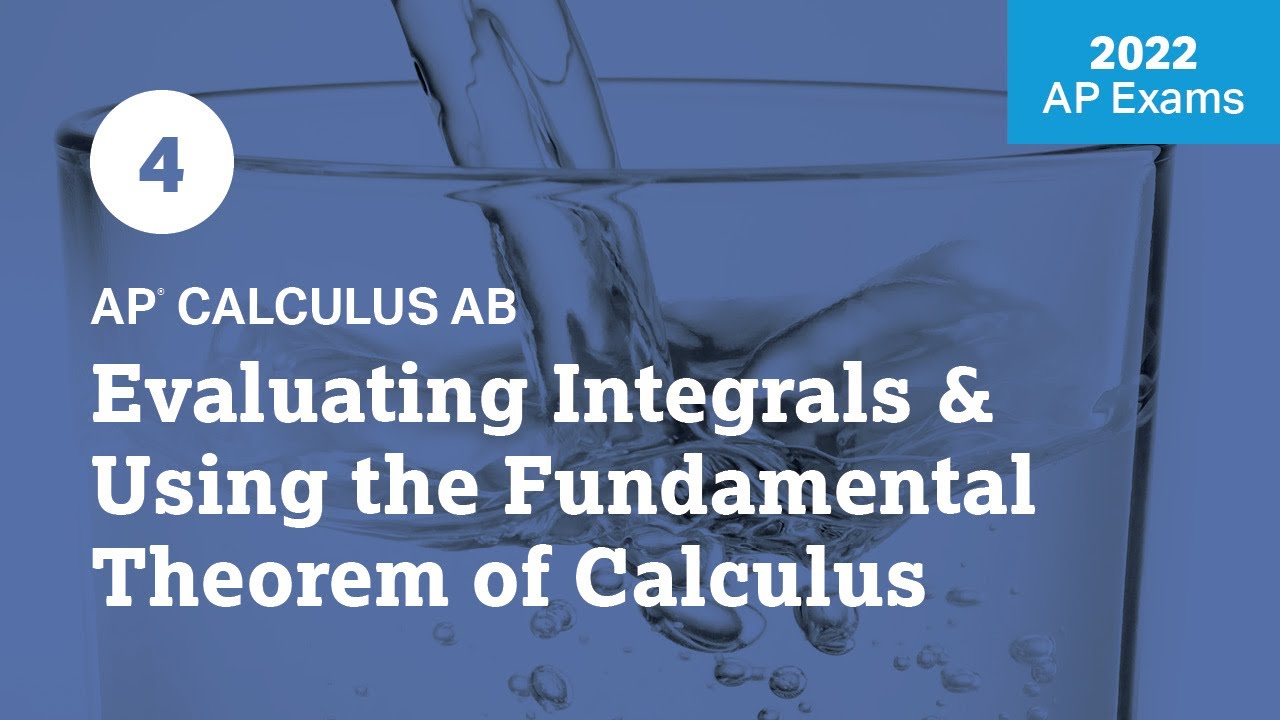
2022 Live Review 4 | AP Calculus AB | Integrals & Using the Fundamental Theorem of Calculus
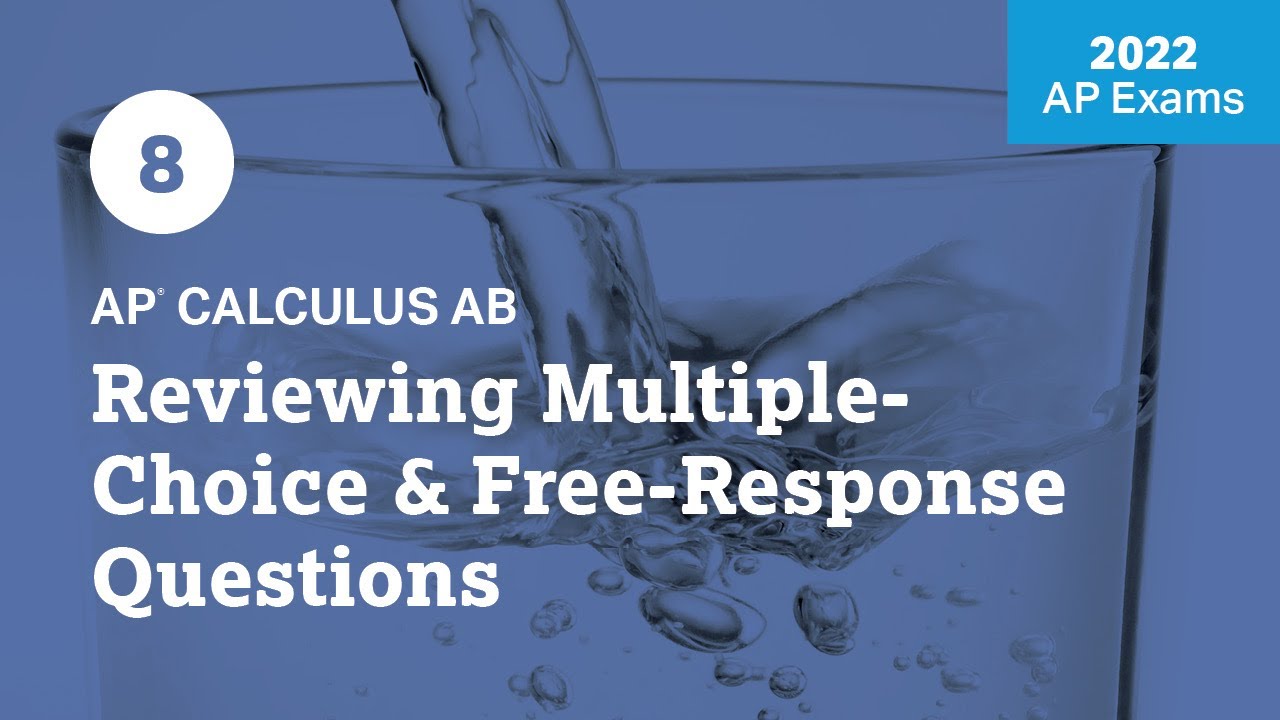
2022 Live Review 8 | AP Calculus AB | Reviewing Multiple-Choice & Free-Response Questions
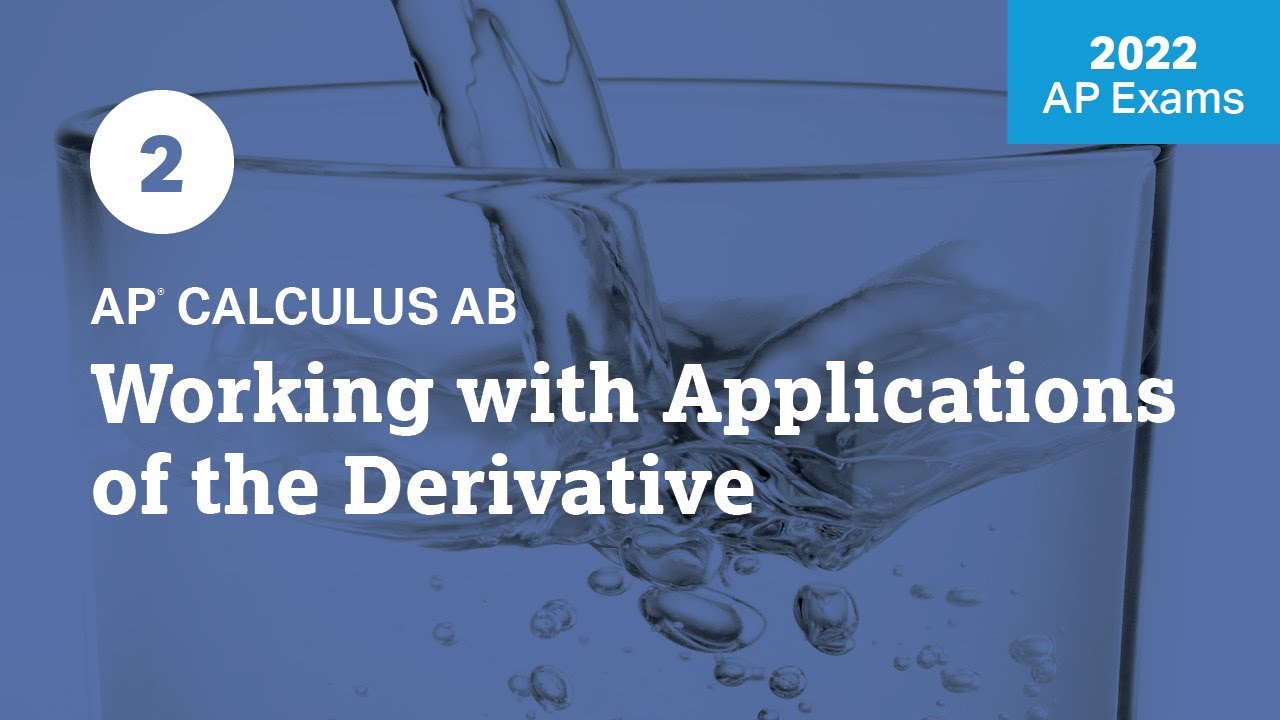
2022 Live Review 2 | AP Calculus AB | Working with Applications of the Derivative
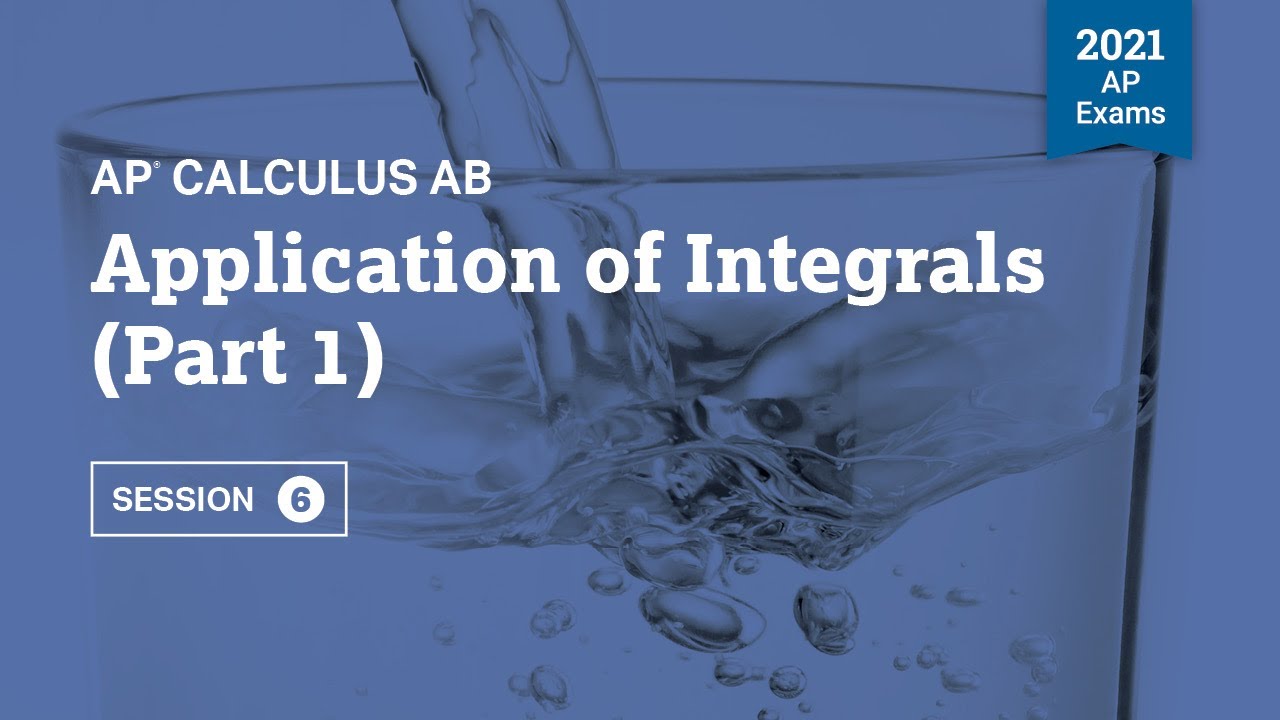
2021 Live Review 6 | AP Calculus AB | Application of Integrals (Part 1)

8 | FRQ (No Calculator) | Practice Sessions | AP Calculus AB
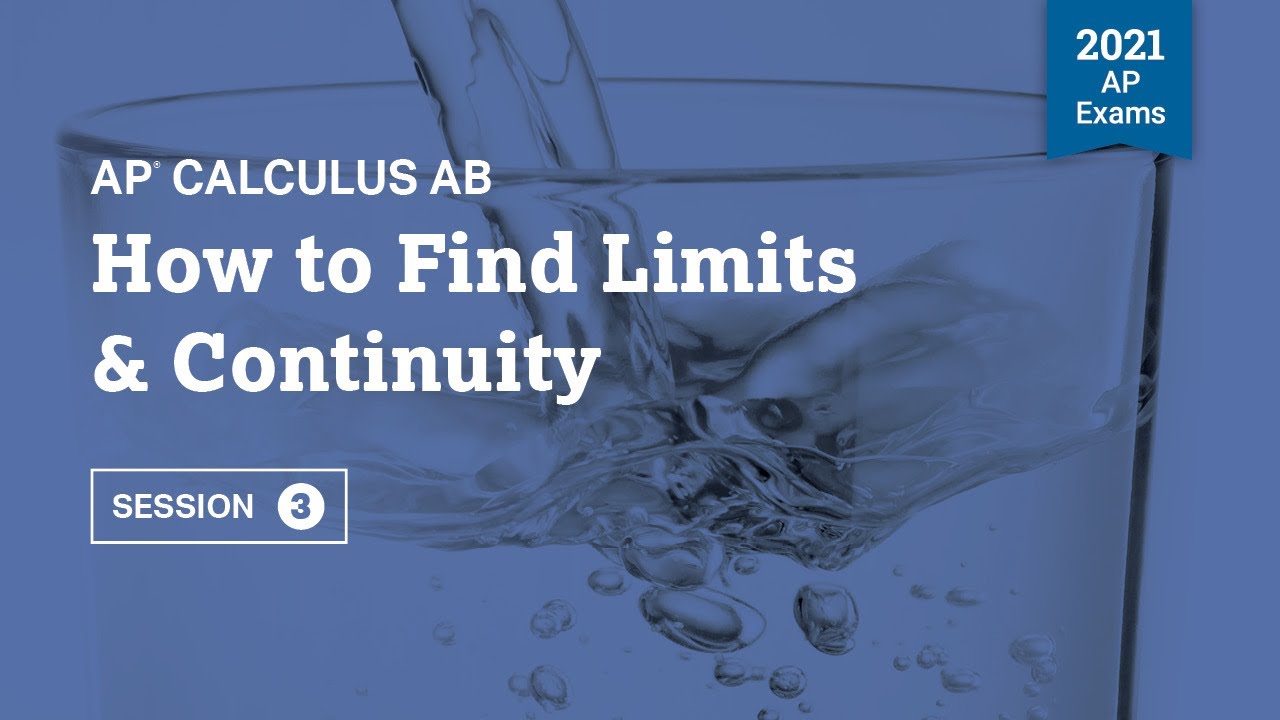
2021 Live Review 3 | AP Calculus AB | How to Find Limits & Continuity
5.0 / 5 (0 votes)
Thanks for rating: